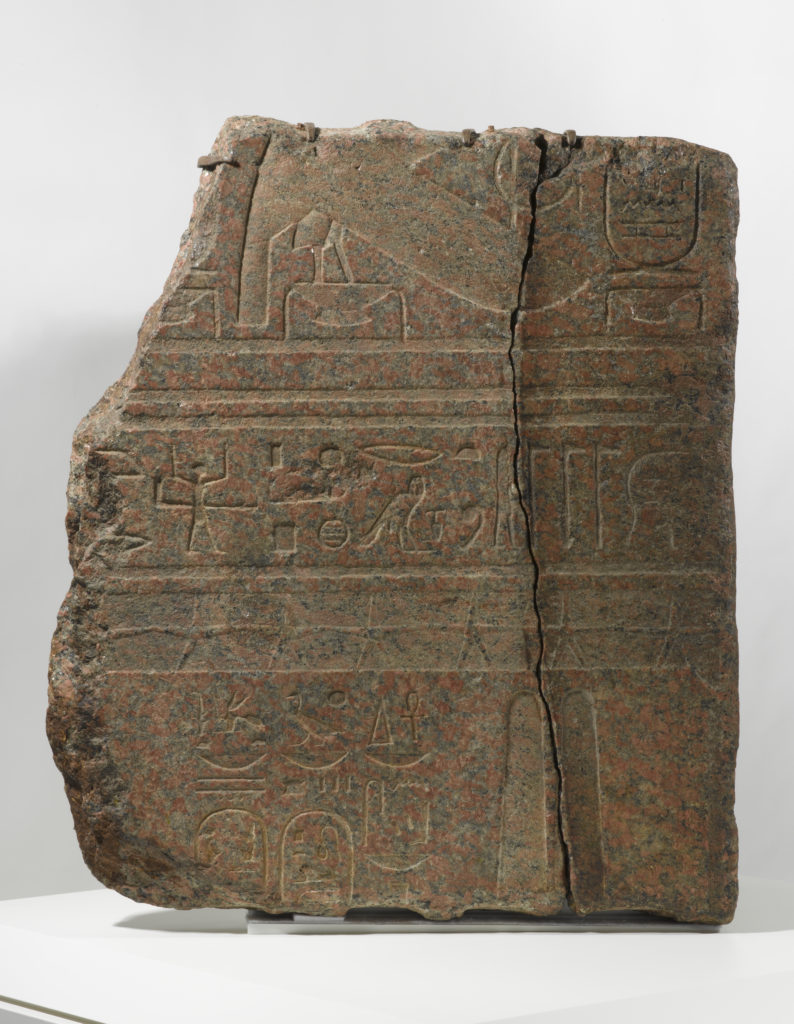Royal Offering Scene from a Temple (work of art)
Artwork Info
Key Ideas
- This granite fragment shows two sides of a relief carving from a shrine. A large human figure and hieroglyphic text are lightly carved into the stone. This shrine comes from a temple in which Egyptian people honored Isis, the goddess of healing and magic.
- The large figure is Pharaoh Ptolemy II Philadelphus. He can be identified as royalty because he wears the deshret, or Red Crown of Lower Egypt. It is shorter in the front and rises in a sharp curve toward the back. A spiral shape is attached to the front to represent the uraeus, or rising cobra.
- Pharaoh Ptolemy II Philadelphus was the second Greek ruler of Egypt. Greek rulers continued the traditions of Egypt by building temples, depicting themselves in traditional royal clothing, and honoring Egyptian deities.
Learn More
This relief probably comes from a shrine to the goddess Isis. It represents Pharaoh Ptolemy II Philadelphus, the second king of Greek origin to rule in Egypt. He wears the crown of Lower Egypt and holds offerings of wine jars. Only the right side of the goddess is visible on this fragment. The inscriptions list his names, titles, and assurances of “all life, health, and joy.”
Additional Resources
Resources for Educators
- Watch this webinar to learn more about the Greco-Roman period of Egyptian history.
- Learn more about Pharaoh Ptolemy II Philadelphus.
Resources for Students
- Learn more about the royal crowns of Egypt.
- Make your own relief sculpture.



